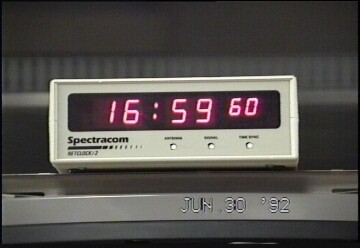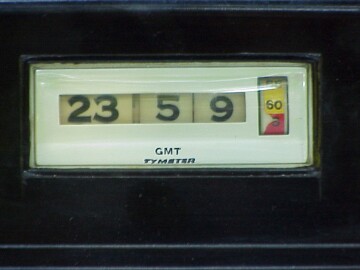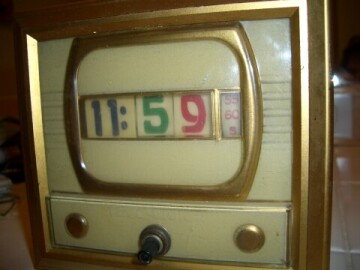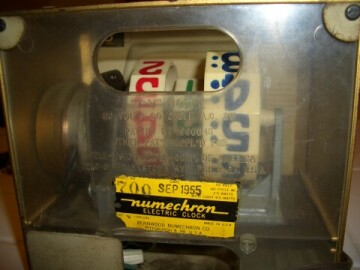
5-Jul-2005
Now that you know what a leap second is, have you wondered if you can see one? Can you hear a leap second? Several of us enjoy capturing leap seconds. You have to be quick; you have to plan ahead. You have only one second to fish and then wait a year or two, or even seven, before your next chance. Below are examples of catching a leap second in the act.
As a kid in the summer of 1972 I used a short-wave radio cassette audio tape recorder to record the first leap second. Alas, I still can't find that tape.
Doug Hogarth has a nice set of leap second captures on his web site:
I have some leap second captures here:
The HP/Agilent/Symmetricom 5071A is one of the only clocks in the world that is designed to handle a scheduled leap second and display it at the correct instant.
See the: Agilent 5071A Leap Second (movie) (2.5 MB)
Up close, yet another slant on Agilent 5071A Leap Second (movie) (2.8 MB)
If Agilent can do it so can Symmetricom...
Photo of first Symmetricom branded 5071A; staged at FCS/PTTI 2005 Vancouver, BC:
You can simulate past or future leap seconds:
This might be the oldest leap second photo on the web, a Spectracom Netclock/2 showing the 1992-06-30 leap second.
At the time I ran a stratum 1 server (salt.jpl.nasa.gov) which was IIRC a Macintosh IIfx using A/UX. The Netclock/2 had an antenna on the roof and was attached to the Mac via an RS-232 serial line. I wanted to capture the leap second crossing event so I set up my personal Sony Hi8 camcorder in the office to record around the event. [I still have the tape somewhere.] I had access to a video capture board that was pretty good for single images but not so good for making movies. [Consider the time, 1992.] So I captured this image from the video and published it.

John's photo used by permission. The full-sized photo is at http://www.its.caltech.edu/~dundas/ntp/leap.jpg
In the humor department, could this be a leap second from the 1950's?
I have attached a picture of a old analog electric clock, catching a leap second! That's its normal display, it does not have a zero. Its a Model 100 GMT Numechron Tymeter, by Tymeter Electronics, the Pennwood Numechron Company in Pittsburgh, PA. I believe it's made in 1956 from the date code.

Brian's photo used by permission.
Here's a 12-hour model also trying to show a leap second...
 |
 |
The above set of Numechron photos bring up an curious point. Today almost all clocks name the first second 00 and the last second 59. Interesting that these 1950's clocks (at least this brand) were labeled 60 instead of 00 for the top of the minute. If someone knows the history of this let me know.
(These vintage Numechron clocks are, of course, not showing real leap seconds.)
Since we haven't had a leap second for seven years, we're all excited about the next one, 31 December 2005. Please try your hand at capturing it.